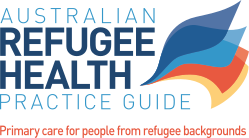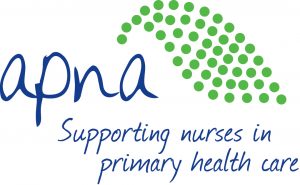
Chronic Non-Communicable Diseases in Adults
Kate Walker, Nadia Chaves
Recommendations
- Offer screening for non-communicable diseases (NCDs) as per the RACGP red book including screening for:
- smoking, nutrition, alcohol and physical activity (SNAP) risk factors
- obesity, diabetes, hypertension, cardiovascular disease (CVD), chronic obstructive pulmonary disease (COPD) and lipid disorders
- breast, bowel and cervical cancer.
- Assess diabetes and CVD risk earlier for those from regions with a higher prevalence of non-communicable diseases (NCDs) or an increased BMI or waist circumference.
- Although this chapter does not specifically refer to children we recommend recording body mass index (BMI) and blood pressure (BP) in all and offering management if abnormal.
Overview
Non-communicable diseases (NCDs) include CVD, diabetes, respiratory diseases such as chronic obstructive pulmonary disease (COPD), musculoskeletal diseases and some cancers. There are few published data on the prevalence of NCDs in people from a refugee-like backgrounds in Australia. Some studies report a higher rate of NCDs in some refugee populations.280 There is published evidence that people from refugee-like backgrounds may have an increased prevalence of diabetes,280–282 hypertension,282–285 dyslipidaemia,156,282 musculoskeletal disease, chronic respiratory disease,280 obesity or overweight274,280,283,284,286 and CVD,282,287 compared to the population of country of settlement.
Conversely, some studies show a reduced prevalence of NCDs in some groups of immigrants living in high-income countries (HICs) compared to the long-term residents: the ‘healthy migrant effect.’288,289
The rates of death related to NCDs are increasing in Australia290,291 and internationally particularly in low- and middle-income countries (LMIC), including refugee-source countries.292,293 Premature death attributable to NCDs in LMIC occurs at a far higher rate than in Australia.294
The major potentially treatable risk factors for the development of NCDs are poor nutrition and low physical activity, which pre-dispose to obesity, excessive alcohol intake, cigarette smoking and hypertension.
There may be additional explanations for the increased prevalence of NCDs. For immigrants moving from a low- or middle-income country to a high-income country (including people from a refugee-like background) these include abdominal obesity, dyslipidaemia, genetic and environmental factors.295–297 Experiences of prolonged poverty, forced migration, time spent in refugee camps or similar circumstances may also be potential risk factors for developing NCDs. For example, perinatal deprivation or malnutrition is considered to pre-dispose to diabetes and to other NCDs. 298,299 Post-traumatic stress disorder (PTSD) and depression are associated with hypertension and hyperlipidaemia.300 People from refugee-like backgrounds with NCDs may also be at risk of complex and multiple comorbidities due to poor socioeconomic conditions and concomitant mental illness, as well as inadequate access to preventive and chronic disease care.
Nutrition and obesity
There are few studies investigating risk factors for obesity in people from refugee-like backgrounds specifically but low socioeconomic status, food insecurity, high intake of sugar-sweetened drinks, body image and inappropriate beliefs related to food, stressful family life and depression are all risk factors for obesity in the general community, including those from refugee-like backgrounds.288,301,302 Some refugee-background children reportedly assimilate quickly to less healthy Australian diets,303 and cultural groups may value childhood obesity as a sign of health and success.304 Other refugee-background communities feeling overwhelmed by food choices305 and have limited knowledge and access to information about healthy food options in Australia.301
Physical activity
There are few published data on physical activity in people from refugee-like backgrounds. Amongst culturally and linguistically diverse communities, some refugees were less likely to be active or to consider physical activity due to PTSD.306
Diet and exercise requires individualised and culturally sensitive approaches.306
Tobacco, alcohol and other substances
Little is known about the use of substance in refugee-background communities in Australia.307,308 A recent review of substance use in people from refugee backgrounds in the USA suggested a ‘refugee paradox’ much like the ‘healthy migrant effect.’309 Nevertheless drug, tobacco and alcohol issues have been identified as specific health issues of concern following consultations with refugee groups in Australia.15,310 There are no data on the prevalence of smoking in people from a refugee-like background, and reported prevalence in immigrants varies according to gender, time since migration and country of origin.311 There are reports of increased smoking behaviour and heavy alcohol use in people from a refugee-like background who experience PTSD.308 Tobacco intake via a water pipe has been reported in those from the Middle East and Africa and has been shown to potentially increase nicotine dependence.312 Certain ethnic groups may also use other addictive substances, such as betel nut in Burmese313 and khat in Somali communities.314
There are few data on the use of complementary and alternative medicines by people from a refugee-like background.315 Over-the-counter medications within some refugee communities have been linked to potential lead poisoning.271 As with any patient, obtain detailed history of complementary and alternative medicine use.
History and Examination
- Evaluate for NCDs at initial assessment, then annually, or as opportunities arise.
- Consider prevalence of NCDs in country of origin.294 These may be underestimates in some refugee-source countries, because of infrequent screening and adequate data collection.
- Family history may be unknown; many people from refugee-like backgrounds have experienced family separation and loss.
- Ask about:
- diet and nutritional status, including the amount of sugar-sweetened drinks (see ‘nutrition and obesity’ above) processed food and other carbohydrates
- smoking, alcohol, other substances, prescribed and non-prescribed medications
- physical activity
- chest symptoms. e.g. consider COPD in those > 35 years with breathlessness, cough and/ or sputum production (after active TB is excluded). Biomass fuel cooking, common in many LMIC is associated with COPD316
- over-the-counter medications, alternative medications and herbal products (e.g. betel nut, khat), illicit substances.
- Examine:
- weight, height and waist circumference. Calculate BMI. It should be noted that ‘normal’ values vary between ethnic groups and gender317,318
- blood pressure
- nutritional status
- signs of CVD, COPD, alcohol use, tobacco use.
Investigations
At present there is no evidence to support screening for NCDs in refugee-background people earlier than current Australian guideline recommendations.
We recommend diabetes and CVD risk assessment from age 35 years in patients from high prevalence countries and with risk factors such as obesity or hypertension.
- Screen patients without risk factors for diabetes every 3 years from age 40 years using the AUSDRISK calculator and with a fasting blood sugar or HbA1c.
In people who are obese and/or with high-risk ethnicity (Asian, Middle Eastern, Pacific Islander, Southern European, North or Sub-Saharan African) calculate AUSDRISK and undertake testing earlier.
- Calculate absolute cardiovascular risk, serum cholesterol and other lipids: for patients >45 years, or earlier if risk factors.
Cardiovascular risk may be increased in South East Asians and southern Europeans. Those with co-morbid PTSD and depression may have dyslipidaemia. These groups may warrant earlier screening.
- Screen for chronic renal disease if at increased risk (e.g. because of smoking, hypertension, CVD, obesity, family history, diabetes) with a urine albumin:creatinine ratio and UEC (urea electrolytes and creatinine) with calculated glomerular filtration rate.
- Offer screening for breast, cervical cancer, colorectal cancer and osteoporosis as per the RACGP red book
- See Low Vitamin D.
Management and Referral
Manage possible or established NCDs and according to current Australian guidelines, as indicated in the links below. Use tailored, patient-centred, explanatory models.
Educate regarding lifestyle risk factors:
- Provide dietary advice, including recommending tap water as the main drink to all patients, irrespective of age.
- Consider discussions about NCDs in all individuals including adolescents especially in unaccompanied or separated minors.
- Take note of cultural and religious impact on diet e.g. Ramadan and diabetes.
- Consider referrals to diabetes nurse educators and dietitians to assist patients to understand and manage their chronic conditions.
- Consider and address social and emotional wellbeing and psychiatric co-morbidities (see Mental Health).
Considerations in Pregnancy
Refer to the Australian antenatal care guidelines 2015
Considerations in Children and Adolescents
Although this chapter does not specifically refer to children we recommend recording weight and height, calculating body mass index (BMI) and recording blood pressure (BP) in all children and adolescents and offering management if abnormal.
Links
RACGP
Australian Heart Foundation
Diabetes calculator
Nutritional guidelines (includes patient resources)
Chronic obstructive airways disease
Physical activity guidelines
Physical activity assessment
Translated information
http://www.healthtranslations.vic.gov.au/
https://www.nlm.nih.gov/medlineplus/languages/languages.html http://www.mhcs.health.nsw.gov.au/publicationsandresources/pdf/publication-pdfs/oth-9450
http://www.dhhs.tas.gov.au/__data/assets/pdf_file/0008/91745/Healthy_Lifestyle_resources.pdf




